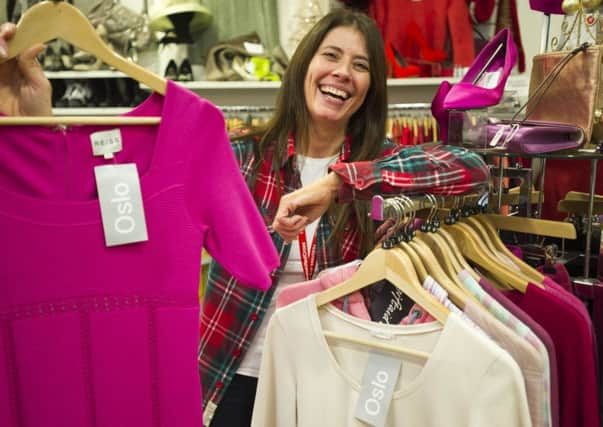Affjordable fashion as charity shops get Oslo chic


Now charity shop fashionistas, who include models Stella Tennant and Erin O’Connor, are being offered the chance to acquire a range of “Scandi Cool” high-quality labels shipped hundreds of miles from Norway to Scotland by the Red Cross.
The new Project Oslo initiative, the first collaboration of its kind by the humanitarian charity, sees second-hand clothes and shoes being sent by the Norges Røde Kors (Norwegian Red Cross) from Oslo to a recycling plant in Denny, Stirlingshire, for sorting and bagging before the majority is distributed to the charity’s shops across Scotland, with the remainder going to the north of England.
Advertisement
Hide AdAdvertisement
Hide AdThe Oslo-label clothes include Norwegian labels such as Michael Olestad, Norwegian Rain, KappAhl and Swims, well-made outdoor clothing and hand-knitted jumpers.
Consignments also feature luxury brands such as Chanel, Dior and Ralph Lauren as well as menswear and high-street favourites such as Zara and H&M.
Whilst Norway has a population of five million, similar to Scotland, it has only a sprinkling of charity shops, which can be easily overwhelmed by donations.
Its high-income economy means there is little scope for empty shops to be turned into charity shops and it has not yet totally embraced the UK’s “charity shop chic” culture.
Instead, people often donate sacks of clothing to textile recycling plants, or it goes to landfill – resulting in less money going to charity.
About 140 tonnes of clothing from Norway has been imported since the scheme began earlier this year. The target is 180 tonnes, with more containers full of donated items due to arrive before Christmas.
The containers, which arrive via Rotterdam, are taken to Nathan’s Wastesavers, one of the UK’s largest textile recycling companies, in Denny, where they are put into categories such as “re-purpose”, meaning there is a market for it, “rag” or “unsaleables”.
Carol Drummond, assistant manager of the Red Cross shop in Raeburn Place, Edinburgh, said a delegation from the Norges Røde Kors had visited the shop to see how the donations were being presented and to gauge customer reaction.
Advertisement
Hide AdAdvertisement
Hide Ad“The customers are loving it. The stuff is just flying out the door. So many of the Norwegian labels are different to what we have on our own high street,” she said.
“We research all our prices and this is reflected in how much the customer pays.
“The items, which are on our Facebook page, are great quality and are all that bit different.”
Diane Goss, the charity’s product and innovation manager, said Project Oslo came from a brainstorming session of Red Cross staff and volunteers.
“The Norwegians were saying with so many people putting clothing in a textile bank, even if it was for charity, they were losing money with textile operators taking their cut,” she said.
“We came up with the idea of the Norwegian donations coming to us, with the Norwegians paying for the shipping and the UK picking up costs for sorting and selling.
“The final profits will be used by the Red Cross for its projects around the world.
“The Oslo-label collaboration means that we are getting the best value for the donation the customer has given us. The alternative would be the items going for textile recycling in Norway.”
Advertisement
Hide AdAdvertisement
Hide AdLast year fashion sales generated more than £12 million for the Red Cross in the UK.
Goss said the money raised from donations and sales funded a range of services provided by the Red Cross.
A typical shopping list for the charity saw £10 worth of income providing a basic pay-as-you-go mobile phone allowing a destitute asylum seeker or someone who had lost their home to retain contact with their loved ones or the authorities.
A £20 sale or donation buys a “Parcel of Hope” containing food, milk and other essentials to support people returning from hospital, while £3 buys emergency packs containing items such as toothpaste, shampoo and other personal products.